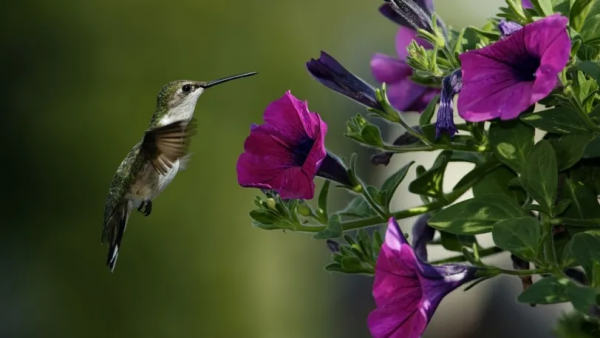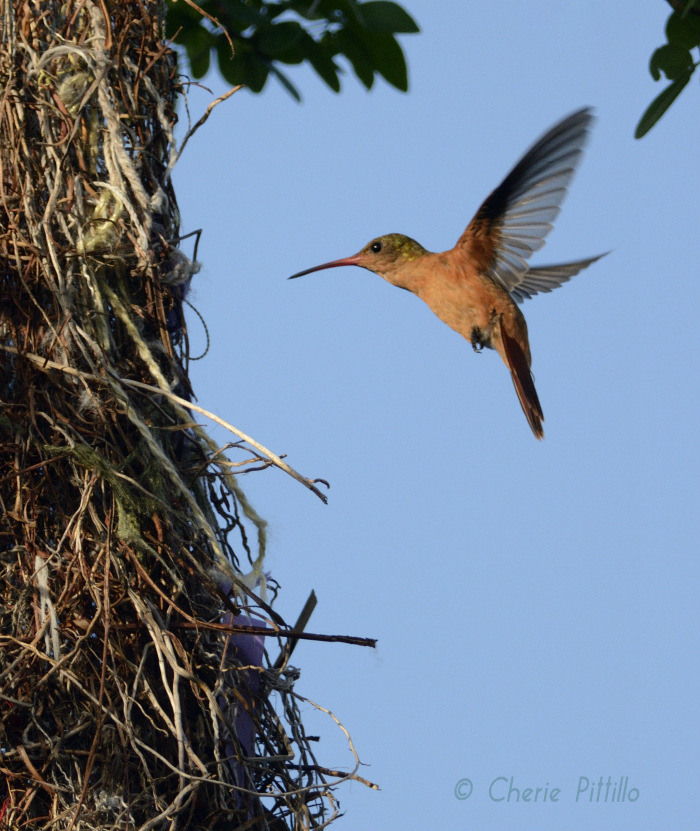Misguided interpretation of Mayan legend generates an increase in hummingbird popularity, diverting them from pollinating native plant species and causing an unforeseen reduction in biodiversity.
The hummingbird is unique in being the only bird that can fly backwards.
Native to the Americas, with its unmatched agility, kaleidoscopic feathers, weapon-like beak, and territorial nature, it is no surprise that the hummingbird is so revered in ancient Mayan mythology.
This reverence, passed down by our ancestors for generations, has not disappeared, and remains present in the Mayan cultures of southern Mexico.
In light of this, over the past two decades, an increasing number of people have been installing artificial bird feeders to attract hummingbirds to their homes as a way to closely interact with these mythical creatures.
This proliferation of feeders has brought about an increase in density and diversity of hummingbirds in cities and towns across Mexico, causing them to be diverted from the countless plants which are dependent on them and disrupting the natural pollination cycle.
This increase in artificial bird feeders has – at least in part – been driven by a fascination with the ancient Mayan legend of the hummingbird; a beautiful tale of death and the heart which has captured the attention of a nation.

According to the legend, the Mayan gods created each creature from clay and corn and entrusted them with a job. However, when they finished, the gods realized that they had not entrusted anyone to carry good wishes and thoughts from one place to another. So, they took a jade stone and carved out a small arrow and blew on it, giving it life. From this, the gods created the hummingbird (Ts’unu’um), a sacred bird that should never be caged or touched by the hand of man.
As the only creature that never died and could enter and exit the underworld (Mictlán), the hummingbird was entrusted with a special job; to carry the thoughts and wishes from our loved ones in the afterlife.
As the legend goes, at night, the gods let the souls of the Mictlán enter the hummingbirds’ bodies and visit relatives on earth. Therefore, if you come across a hummingbird, it is likely delivering a loving message from a relative who passed away.

With these magnificent birds linked to these magical properties, increasing numbers of people have sought to attract the birds using sugar-water feeders, with unintended consequences.
Miguel Alcalde – Director of Mexico Natural, has reported an increase in abundance of hummingbirds in urban areas. “This has happened in cities and towns across the country but is especially notable in Mexico’s South. In the Yucatan, for instance, and Merida in particular, where the Mayan myths relating to hummingbirds resonate strongly”.
These birds were drawn in over sizeable distances to artificial bird-feeders, which each contain the energy roughly equivalent to that contained in around 2500 flowers.
Such a change in behavior does not come without consequences, in this instance endangering the 1000 plus species of flower that the hummingbird is known to pollinate, some of which are inaccessible to other birds which don’t possess the hummingbirds’ iconic long beak.
In addition, a study found that hummingbirds would choose artificial bird feeders over flowers at times when fewer flowers were present, causing a reduction in the number of fruits and seeds generated.
This human behavior intent on drawing the hummingbirds closer, Alcalde believes, is driven by the strong spiritual significance associated with these birds who have “inhabited the collective consciousness in Mexico for millenia”.
Whatever the reason, as the behavior of the hummingbird is being altered by human intervention, a chain reaction is being felt which threatens the existence of certain plant species. However, these often well-intentioned interventions are not unique to the hummingbird.
In Australia for example, an attempt to protect sugar cane fields from invasive insects backfired spectacularly after the introduction of the Cane Toad. The toads exploded in number from the original 102 to over 1.5 billion, spelling disaster for native species and resulting in them being ranked among the top 100 invasive species in the world.
Similarly, in the United Kingdom, animal rights activists famously released thousands of minks into the countryside to save them from being used for fur coats. However, this proved disastrous for local ecosystems. With few predators, the mink killed farm animals, pets, rare birds and fish, resulting in a ‘mink’ helpline being set up by local police to handle complaints.
These examples should serve as a warning that when humans intervene with the natural order of things there can be devastating unintended consequences.

Given the hummingbirds’ critical role in the health of the ecosystem, and their significance in cultural memory, these unforeseen consequences present an opportunity for the Mayan legend of the hummingbird to be deployed to protect these majestic messengers and the myriad of plant species that are dependent on them.
These unexpected consequences have resulted from the misinterpretation of the hummingbird legend, which, given its essence, that these sacred birds should never be caged or touched by the hand of man, provides a passage through which these extraordinary birds can garner the respect that they deserve.
By honoring the beliefs of our ancestors, the hummingbird can be left to carry out the role entrusted to them by the Mayan gods; to carry the thoughts and wishes from loved ones in the afterlife to relatives on earth.
For Times Media Mexico, Madeleine Vallier in the Yucatan


